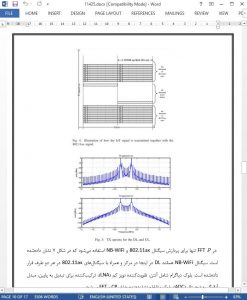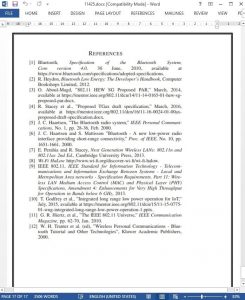Abstract
Key features of the two dominating standards for the unlicensed bands, IEEE 802.11 and Bluetooth Wireless Technology, are combined to obtain a physical layer (PHY) with several desirable features for internet of things (IoT). The proposed PHY, which is referred to as Narrow-band WiFi (NB-WiFi) can be supported by an OFDM transceiver available in an IEEE 802.11 access point (AP). In addition, NB-WiFi supports concurrent use of low data rate IoT application and high data rate broadband using IEEE 802.11ax technology, based on a single IFFT/FFT in the AP. In the sensor node, Bluetooth Low Energy (BLE) hardware can be reused, making it suitable for dual mode implementation of BLE and NB-WiFi. The performance of the proposed PHY is simulated for an AWGN channel, and it achieves about 10 dB improved sensitivity compared to a typical BLE receiver, due to the lower data rate.
I. INTRODUCTION
In this work we propose a new physical layer (PHY) based on combining key advantages of the Bluetooth Low Energy (BLE) [1], [2] and the IEEE 802.11 standards, namely the power efficiency of BLE and the wide availability of IEEE 802.11 infrastructure. We denote this PHY Narrow-Band WiFi (NB-WiFi). To enable low cost and coin cell operated IoT devices, the modulation is compliant with, although not identical to, Gaussian Frequency Shift Keying (GFSK). This allows vendors to re-use BLE chip-set designs and provides the IoT devices the possibility to operate in multiple modes; one BLE mode and one IoT mode. In order to leverage on the wide-spread availability of 802.11, NB-WiFi is made compatible with the Orthogonal Frequency Division Multiple Access (OFDMA) design of the upcoming 802.11ax standard [3],[4]. The OFDMA compatibility provides spectrum efficiency, while allowing re-use of hardware in Access Points (APs) supporting IEEE 802.11ax.
V. CONCLUSIONS
This paper introduced NB-WiFi, a PHY targeting IoT applications. The design allows low complexity implementations and provides excellent link performance. In addition it possesses two key features. First, it enables maximum reuse of hardware already available in BLE and IEEE 802.11. Second, it targets the possibility of concurrent operation with the upcoming 802.11ax standard. This ensures good coexistence with other 802.11 systems, as well as efficient spectrum use. Excellent performance was demonstrated, although reuse of hardware from BLE and IEEE 802.11ax was assumed. This shows that the proposed PHY could leverage on existing chipset designs in the development of low cost and power efficient IoT systems.











